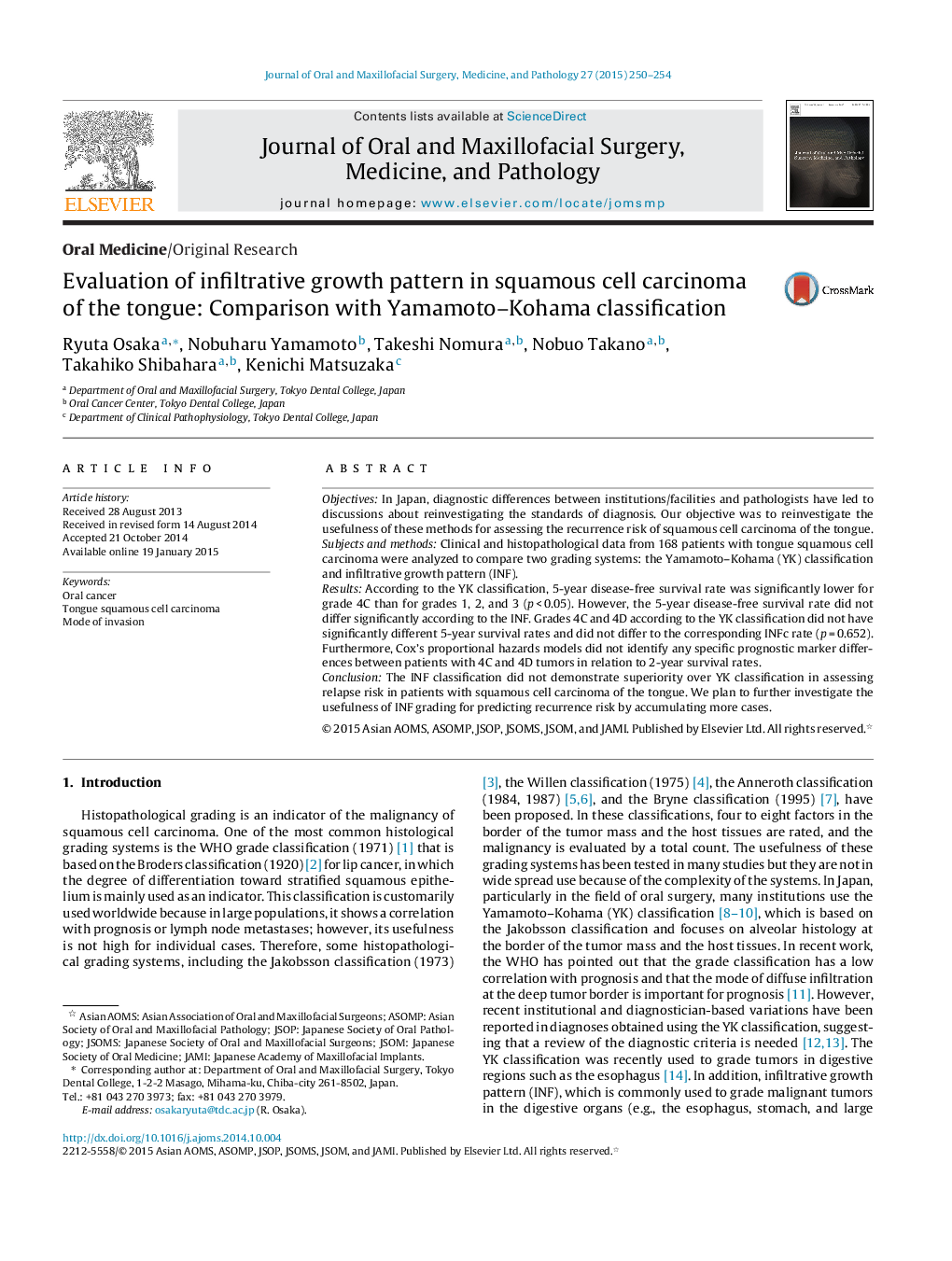| Article ID | Journal | Published Year | Pages | File Type |
|---|---|---|---|---|
| 3160534 | Journal of Oral and Maxillofacial Surgery, Medicine, and Pathology | 2015 | 5 Pages |
ObjectivesIn Japan, diagnostic differences between institutions/facilities and pathologists have led to discussions about reinvestigating the standards of diagnosis. Our objective was to reinvestigate the usefulness of these methods for assessing the recurrence risk of squamous cell carcinoma of the tongue.Subjects and methodsClinical and histopathological data from 168 patients with tongue squamous cell carcinoma were analyzed to compare two grading systems: the Yamamoto–Kohama (YK) classification and infiltrative growth pattern (INF).ResultsAccording to the YK classification, 5-year disease-free survival rate was significantly lower for grade 4C than for grades 1, 2, and 3 (p < 0.05). However, the 5-year disease-free survival rate did not differ significantly according to the INF. Grades 4C and 4D according to the YK classification did not have significantly different 5-year survival rates and did not differ to the corresponding INFc rate (p = 0.652). Furthermore, Cox's proportional hazards models did not identify any specific prognostic marker differences between patients with 4C and 4D tumors in relation to 2-year survival rates.ConclusionThe INF classification did not demonstrate superiority over YK classification in assessing relapse risk in patients with squamous cell carcinoma of the tongue. We plan to further investigate the usefulness of INF grading for predicting recurrence risk by accumulating more cases.
